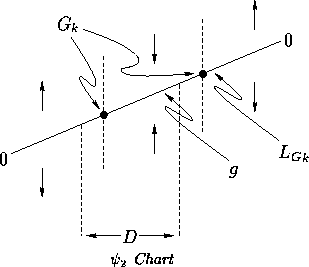We will determine ![]() and
and ![]() for a linear function
for a linear function ![]() .
.
We have assumed that ![]() .
Take any
.
Take any ![]() ; a simple proof
by contradiction, which follows, shows that
; a simple proof
by contradiction, which follows, shows that
![]() is an exact bound of g:
is an exact bound of g:
![]()
Assume there is a point
![]() such that
such that ![]() .
Let
.
Let ![]() , so
, so ![]() .
Furthermore,
.
Furthermore, ![]() and
and ![]() imply that
imply that ![]() .
.

| Jeff Tupper | March 1996 |